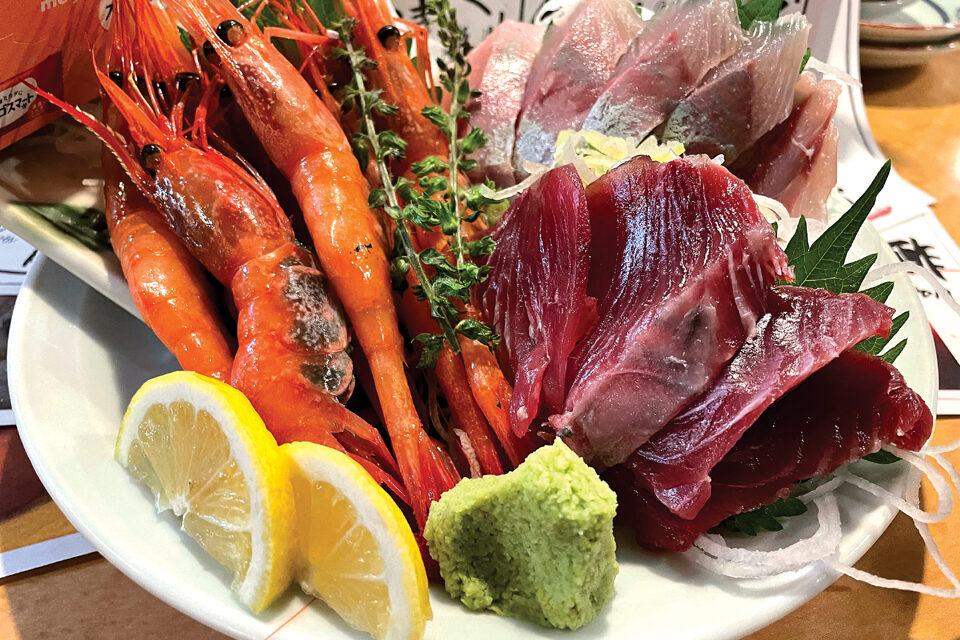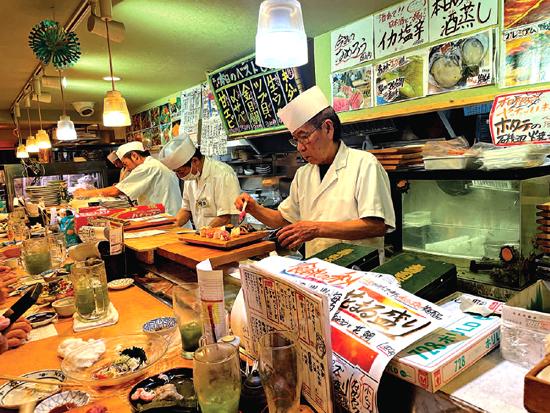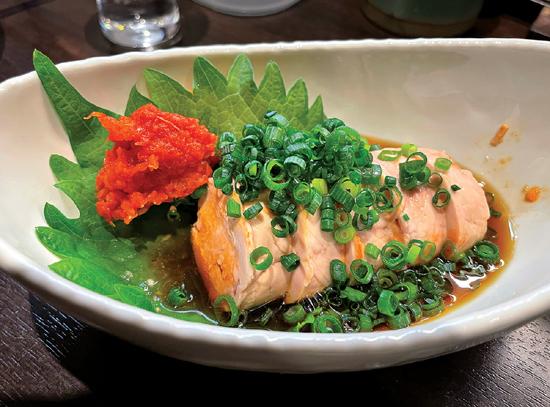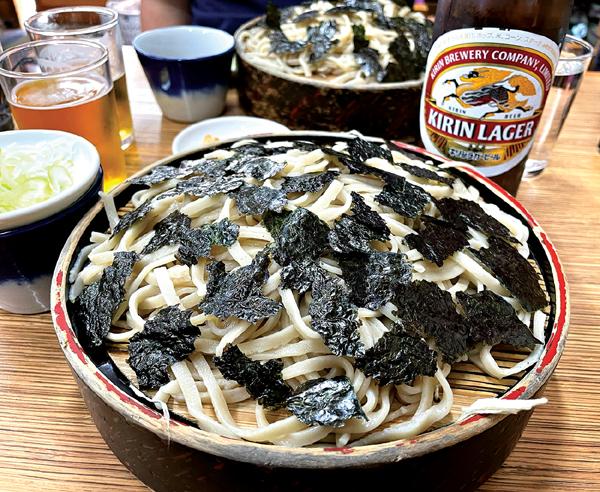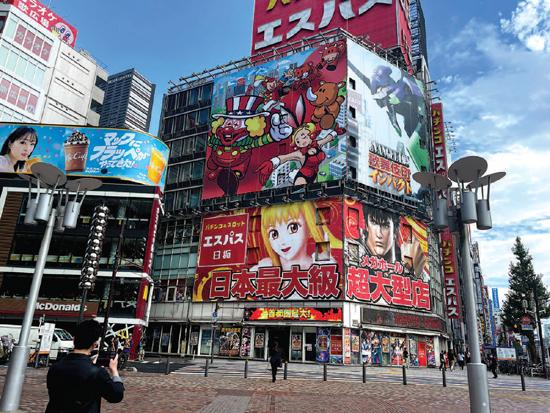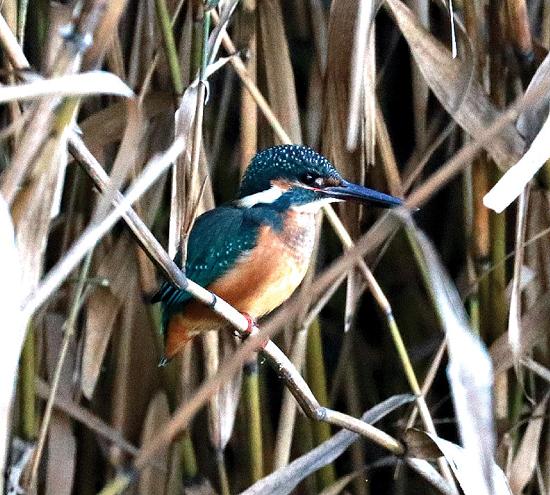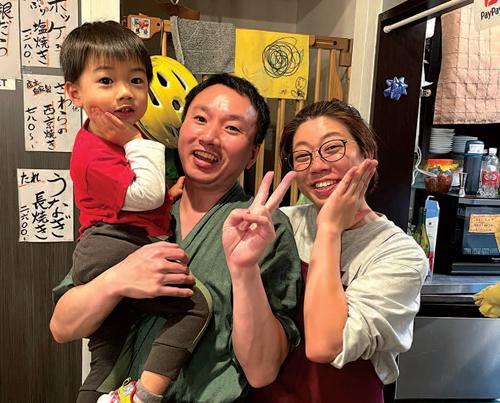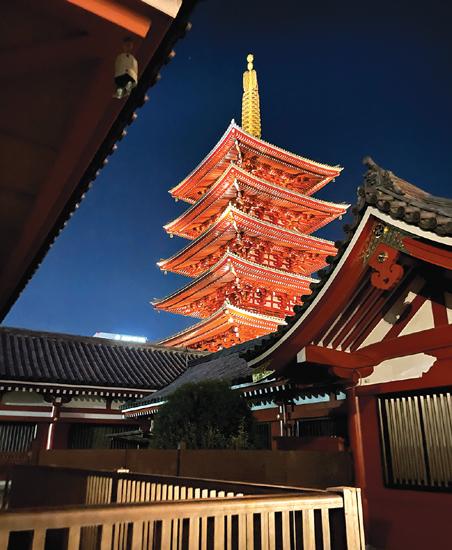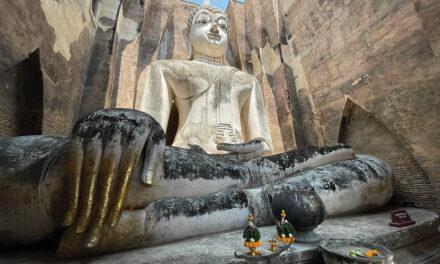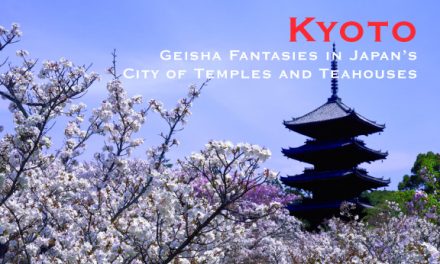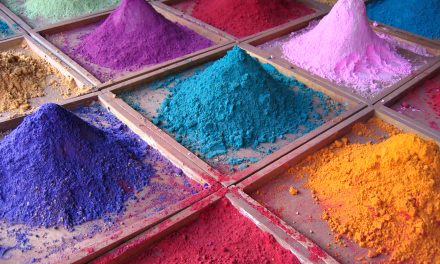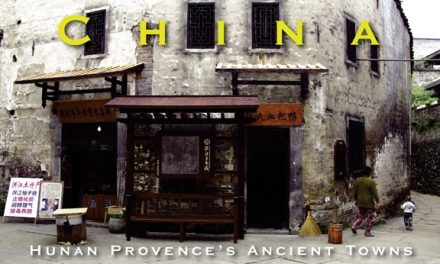Japan
Savouring My Return Visit to Tokyo
Article and photography by Steve Gillick
One of my first social media posts from Tokyo featured a colorful medley of scrumptious dishes: Blue-egged Sweet Shrimp, Salmon, and Sea Urchin roe, a selection of ultra-fresh tuna sushi that included the prized fatty cuts, and a fragrant bowl of chicken with delicate bamboo shoots, and fish cake, complemented by several cups of delicious, crisp and dry Kamikawa Taisetsu Sake from Hokkaido. A friend in Canada immediately responded that I was embarking on yet another chapter of “How I ate and drank myself through Tokyo”. Nothing could have been closer to the truth!
This return visit to Tokyo aimed to see and do as many “new” things as possible, including switching our hotel from the vibrant Ginza area to the energetic Asakusa neighborhood. Our modest room at the Kanzashi Asakusa Hotel imparted dramatic views of the Tokyo SkyTree, the tallest tower in the world, and Sensoji, the oldest temple in Tokyo. And while we had visited Asakusa many times on previous trips, living right next to the temple paved the way for new opportunities.
Sensoji is packed with tourists during the daytime, each vying to get the best photos, selfies, and videos and then flocking to the ancient street, Nakamise-Dori, to buy souvenirs and sweets. But in the evening, when we walked through the temple area from the Asakusa Metro Station to our hotel, nary a person was in sight. It was just us, the night sky, the bright moon, the glaring, scowling faces of the temple-guardian Nio statues, and the beautifully lit buildings showing off the exquisite architectural details and carvings of the Hozomon, or Treasure-House Gate, the Five-Story Pagoda, the Main Hall, and the Asakusa Shrine. This is the place to be after hours for tranquility.
However, the other side of Asakusa can be electric, with crowds checking out stores such as Uniqlo for clothing and Don Quixote for discounted prices on everything, along with relishing the street food. Happy hordes head to Hoppy Street to dine and drink at one of the many small Izakayas. Hoppy refers to a virtually non-alcoholic beer. It’s mixed with Shochu (25% to 40% alcohol), giving the bland-tasting drink some bite!
But we were curious about a lineup outside a tiny restaurant and discovered Okina Soba. Freshly made cold soba noodles (zarusoba) are served in a large bowl, accented with dollops of fresh seaweed. You dip the soba into the special sauce (tsuyu) with your chopsticks. It’s so tasty. And when you’re finished, pour hot soba water (sobayu) into the remaining tsuyu, and enjoy a comforting, end-of-meal drink.
On another day, with soba thoughts, we found ‘Naze Sobani Raayu wo Irerunoka’ near the Shimbashi JR Station. The humorous name means, “Why do people put spicy oil in their soba?” Our dish was a taste bud dream! Cold soba with an extraordinary dipping sauce of perfectly spiced oil, seaweed, sesame seeds, scallions, and bamboo. When you mix in a raw egg, it’s ‘umai’: So good!
Tendon (short for ‘tempura donburi’) is another great lunch option. Tempura Nakayama in the neighborhood of Ningyocho is only open for lunch from 11:15 am to 1:00 pm. This tiny, counter-seat restaurant has a high turnover of loyal customers, so the line moves quickly. No photos, no kids under 12, no groups.
We ordered the shrimp, fish, and vegetable Tendon, incredibly tender and tasty, bathed in a delicious sauce that was a little sweet, a little barbeque, and a little soy. We enjoyed it with crunchy pickles, miso soup, and beer. Highly recommended!
And at Cally no Mise Hachigatsu (‘Curry Shop, August’) in Shimokitazawa, Tokyo’s Curry Capital, we savored every bit of the outstanding, packed-full-of-flavor chicken and vegetable curries.
Our evening meals combined memorable past experiences with exciting new ones. In Machiya, we dined at Wasuke (twice!) and Koshuya. In Yoyogi, the go-to place is Sushi Darihan, known for excellent, moderately-priced fresh seafood. In Monzen Nakacho, we dined at Masurao, a stand-up seafood restaurant, as well as Otaruya, which features mouth-watering dishes and sakes from Hokkaido. Specialties at these izakayas include deep-fried oysters, grilled Hokke, salmon jaw, sardine, scallop, mackerel and buri (Yellowtail) sashimi, ankimo (monkfish liver), and cumin chicken wings.
Each evening meal was accompanied by delicious dry sakes from around Japan: Fukui, Fukushima, Miyagi, Yamanashi, Yamagata, Niigata, and Hokkaido.
Aside from our understandable fixation with food and drink, our infatuation with Tokyo and especially ‘what’s new’ in the city kept us very busy. Most stores and attractions don’t open until 10:00 am or 11:00 am, but this was no problem for early risers (like us). Birding at the break of dawn in Senzokuike Park, just 30 minutes outside the city, usually conjures up a colorful Common Kingfisher. Or a visit to Tsukiji Market at 5:30 am allows time to buy fresh onigiri (rice balls filled with seafood) at Onigiriya Marutoyo without the usual long line up, and you can explore the food and kitchen utensil shops along the alleyways and in the two indoor markets without the throngs of tourists.
One morning, we met Misao Sugibayashi, the Instructor at Tsukiji Cooking and assistant instructor Kuniko Tsurugaya. This popular school appeals to those interested in an interactive culinary experience. We started with a shopping excursion for fresh ingredients at the Japanese pickles shop, the bonito flake store, and the fish and seafood stalls. Afterward, we participated in preparing miso soup, tempura, and sushi. The students then had the pleasure of devouring their creations. It was educational, fun, and tasty!
In the Shibuya neighborhood, we visited Magnet, which has a reputation as one of the best places to view and photograph the hundreds of people at the frenetic, all-direction Scramble Crossing. And right around the corner is Miyashita Park, a green oasis with an outdoor activity complex (skate park, bouldering wall, beach volleyball, kids play areas), an indoor shopping arcade (skateboards, vinyl records, casual clothing), and many restaurants. It’s a great place to unwind!
Further activities that soothe the soul can be found in Tokyo’s art scene. There is stunning architecture, such as the Mode Gakuen Cocoon Tower in Shinjuku and the Louis Vuitton flagship store in Ginza. And there are myriad Art Galleries. We visited the Tokyo National Museum in Ueno Park to see “100 Takes on Hanshan and Shide” by Tadanori Yokoo, a Japanese graphic designer, illustrator, and painter. Yokoo posed the two Tang Dynasty Zen poet-monks, known for their erratic behavior and spirituality, in contemporary situations.
We also explored the National Museum of Modern Art in Takebashi, near the Imperial Palace, to learn about the life and art of Munakata Shiko, the world-renowned graphic artist and wood-block printmaker.
Between eating and exploring the city, there was time for shopping in Asakusa, Ginza, Shinjuku, Yurakucho, and Ueno. Overall, we spent seven jam-packed days in Tokyo and, as always, could have spent more.

